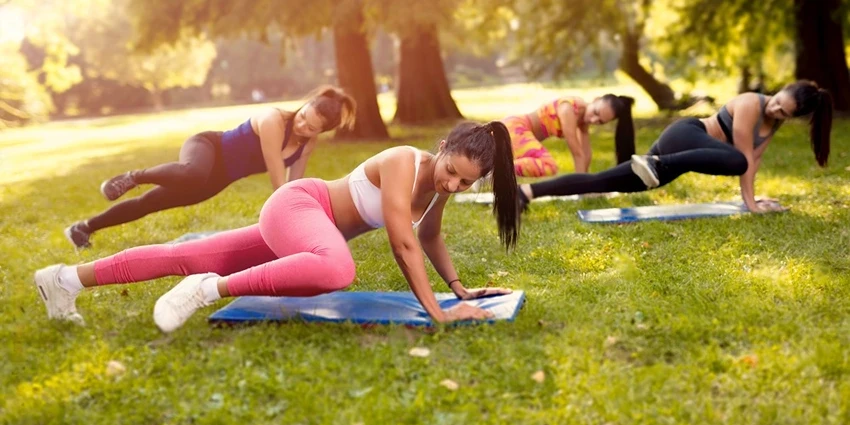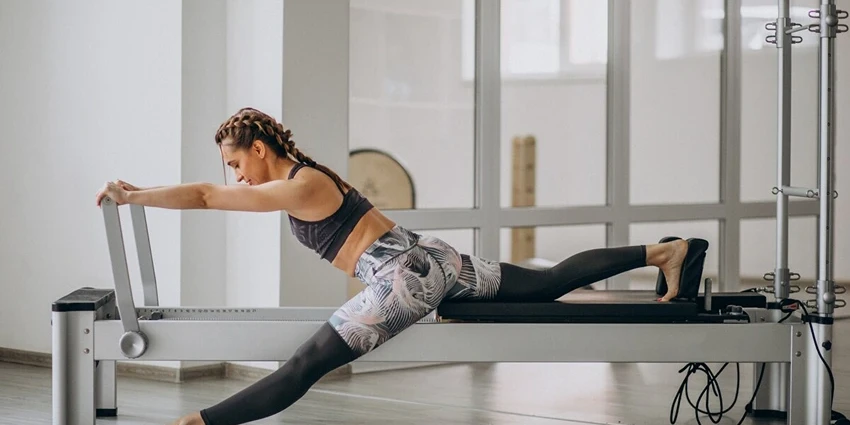Welcome to the world of yoga! As experts at Rac Women, we’ve crafted this guide to help you embark on your yoga journey. Whether you’re a complete novice or have dabbled a bit in the past, this guide is designed to provide you with everything you need to get started.
In This Article
What is Yoga?
Yoga is more than just physical postures; it’s a holistic practice that integrates the mind, body, and spirit. Originating from ancient spiritual techniques, what most in the West consider “yoga” is primarily Hatha Yoga, one of the many paths of this discipline.
Hatha Yoga focuses on:
- Asanas (yoga postures): Physical poses that enhance flexibility and strength.
- Pranayama (yoga breathing): Techniques that cultivate life-force energy.
- Mudra (body gestures) and Shatkarma (internal cleansing): Practices that purify the body and mind.
Is Yoga Right for You? Yoga is for everyone! It doesn’t discriminate based on age, weight, profession, or any other factor. However, if you have specific medical conditions or recent injuries, it’s essential to consult with a healthcare professional before starting. Remember, while yoga can be challenging, it should never cause pain.

Starting Your Yoga Journey
Diving into yoga might seem daunting, but with the right approach, it can be an enriching experience. Here are some steps to ensure a smooth start:
- Choose the Right Style: If you’re new or out of shape, start with a gentler practice and gradually move to more challenging forms. Familiarize yourself with basic postures before exploring styles like vinyasa or flow. Avoid intense forms like Ashtanga or hot yoga initially.
- Gather Essential Equipment: Typically, yoga requires minimal equipment. A sticky yoga mat is essential, and props like straps, blocks, or blankets can be helpful. Don’t fret about buying specialized yoga clothing; just wear something comfortable that allows movement.
- Commit to Regular Practice: The more you practice, the better you’ll get. Aim for 3 or more sessions per week to see noticeable improvements in flexibility, strength, and mental peace.
- Join a Community: Engaging with a community of yogis can be motivating. Make yoga friends, attend workshops, and immerse yourself in the yogic lifestyle.
Benefits of Practicing Yoga
Yoga offers a plethora of benefits, both mental and physical:
| Benefits | Description |
|---|---|
| Mental Health | Yoga fosters mindfulness, reducing stress and promoting relaxation. |
| Physical Strength | Regular practice enhances muscle strength and endurance. |
| Flexibility | Yoga poses improve flexibility and range of motion. |
| Inner Peace | Yoga cultivates inner peace and balance. |
| Disease Prevention | Yoga can prevent conditions like heart disease or diabetes. |

Improving After Starting
Once you’ve embarked on your yoga journey, the next step is progression. Here’s how you can enhance your practice:
- Consistency: Regular practice is the key. The more you practice, the better you’ll become.
- Education: Read articles, books, and other resources to deepen your understanding. For instance, this article offers valuable insights for beginners.
- Workshops: Attend workshops that delve into specific aspects of yoga.
- Journaling: Document your journey. Note down how yoga impacts your body, mind, and heart.
- Inspiration: Find sources of inspiration, be it through books, videos, or teachers.
Remember, every yogi’s journey is unique. Embrace the process, enjoy every moment, and trust in the transformative power of yoga. At Rac Women, we’re here to support you every step of the way.
Understanding Yoga’s Rich History
Yoga is not just a series of postures; it’s a philosophy, a lifestyle, and a science of well-being. Its roots trace back thousands of years, offering spiritual, mental, and physical guidance for those who practice it.
- Yoga Sutras of Patanjali: This ancient text, compiled before 400 A.D., provides a comprehensive guide to the philosophy and practice of yoga. It introduces the eight-limb system, a step-by-step path to achieving yogic freedom.
- The Eight-Limb System: This system is a roadmap to transcend beyond the mind. It includes ethical standards, self-discipline practices, posture, breath control, sensory withdrawal, concentration, meditation, and the ultimate state of freedom.
Table: The Eight Limbs of Yoga
| Limb | Description |
|---|---|
| Yama | Ethical standards and integrity |
| Niyama | Self-discipline and spiritual observances |
| Asana | Physical postures |
| Pranayama | Breath control |
| Pratyahara | Sensory withdrawal |
| Dharana | Concentration |
| Dhyana | Meditation |
| Samadhi | State of ecstasy and spiritual freedom |
Different Styles of Yoga
Yoga has evolved into various styles, each offering unique benefits. Here’s a brief overview:
- Iyengar: Focuses on alignment using props.
- Vinyasa: Dynamic flow synchronizing movement with breath.
- Ashtanga: A fast-paced sequence of poses practiced in a specific order.
- Bikram: A series of 26 poses practiced in a heated room.
- Kundalini: Aims to awaken energy at the base of the spine.
- Yin: Poses are held for longer durations to release tension.
- Restorative: Gentle poses held for extended periods using props for relaxation.

Table: Popular Yoga Styles and Their Benefits
| Style | Key Benefits |
|---|---|
| Iyengar | Improved alignment and posture |
| Vinyasa | Enhanced flexibility and stamina |
| Ashtanga | Strength and discipline |
| Bikram | Detoxification and flexibility |
| Kundalini | Spiritual awakening |
| Yin | Deep tissue relaxation |
| Restorative | Stress relief and relaxation |
Advancing Your Practice
As you delve deeper into yoga, you’ll discover layers of practices, from physical postures to meditation and beyond.
- Dedication: Consistency is key. Aim for regular practice, whether daily or several times a week.
- Subtlety: Pay attention to the finer details. Focus on alignment, breath, and the subtle energy shifts during practice.
- Focus: Cultivate a concentrated intention. As you progress, distractions will diminish, leading to a clearer, more focused practice.
FAQs
Yoga aims to create a balance between the body, mind, and spirit. It offers tools for self-transformation, leading to inner peace and holistic well-being.
Absolutely. Yoga promotes relaxation, reduces cortisol levels, and introduces mindfulness, all of which combat stress.
Yes, yoga can be tailored to fit individuals of all ages and fitness levels. It’s always advisable to consult with a professional before starting, especially if one has specific health concerns.
For beginners, starting with 2-3 times a week is beneficial. As one becomes more comfortable, they can increase the frequency.
While a yoga mat is recommended for comfort and safety, many postures don’t require any equipment. Props like blocks and straps can be beneficial but aren’t mandatory.
Ellen Crandall
Meet Ellen, your fitness compass in the world of athletics, training, and gym culture. With a commitment to well-being and a penchant for all things workout-related, Ellen is here to guide you on your journey to a healthier, fitter you. Join the fitness revolution, led by Ellen, and embrace the power of an active lifestyle.




